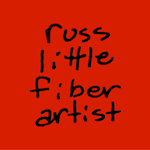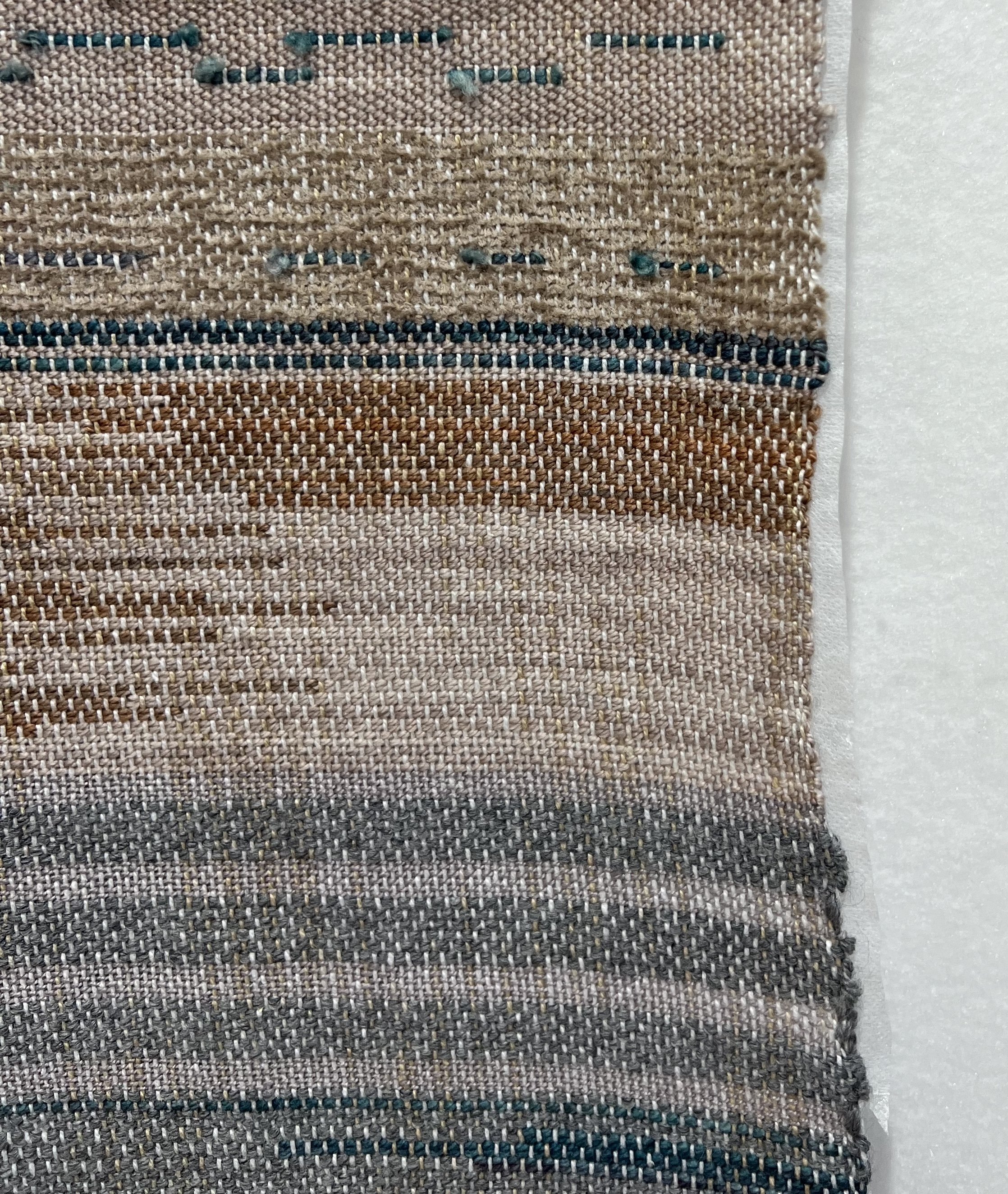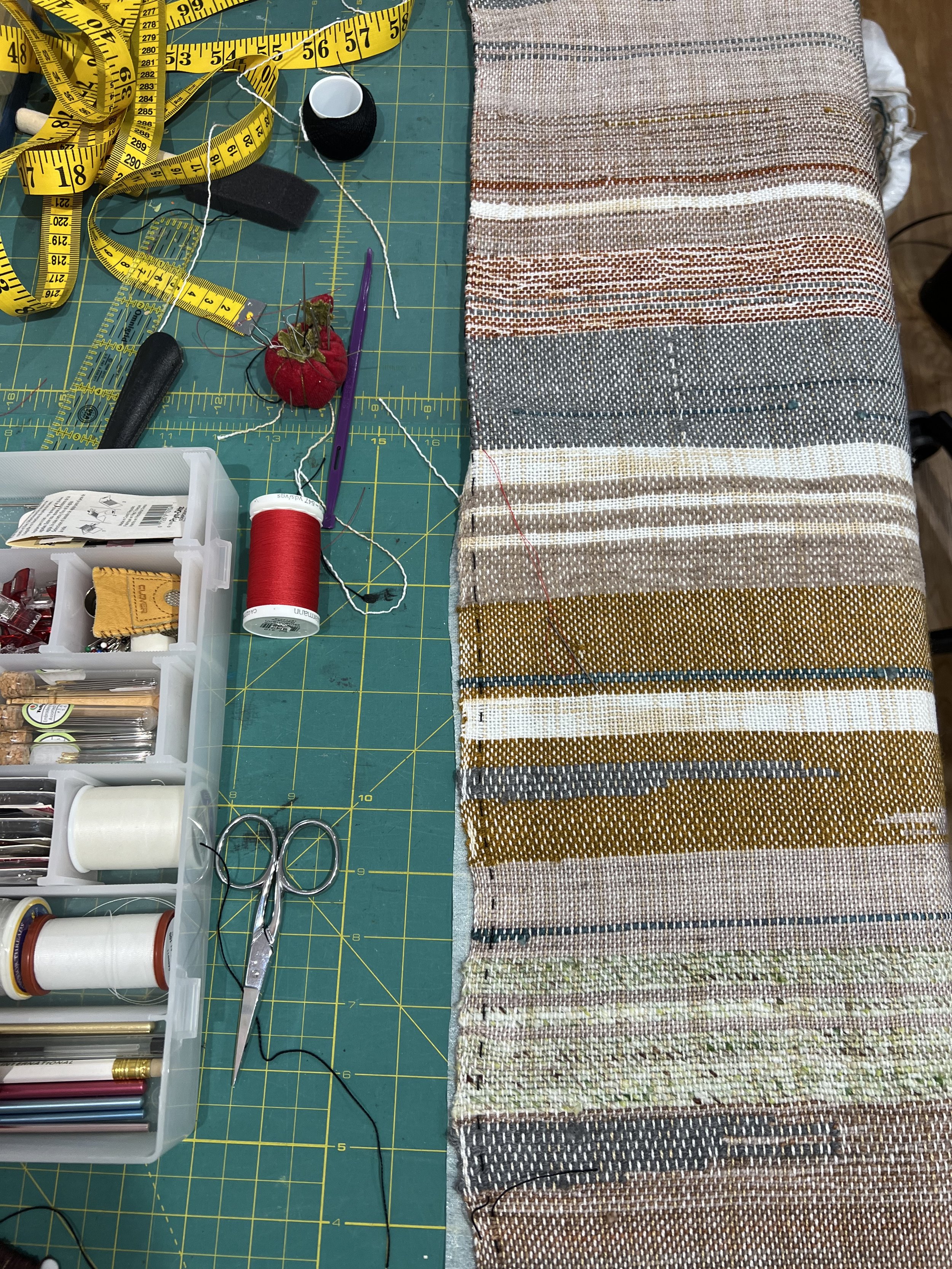Making the most of naïveté
This article originally appeared in a slightly shorter form on the Art Cloth Network blog on 16 March 2024
I'm a new weaver. I've got a total of 5 warps and about 10 yards of cloth to my name, but I'm hooked. I've resisted weaving in the same way that I resisted knitting for so many years. I really did NOT need another needle thing in my bag of tricks to distract me. I have a friend in heaven--a very accomplished weaver--who prophesied this years ago and I know he's laughing now*. I'm not entirely sure that my resistance was the wisest course. But to everything there is a season, and perhaps this season (my 61st if you count by years) is the one. I'm now a passionate knitter and this weaving thing... I can't get over how quickly color and pattern develop as the shuttle flies back and forth and how much there is to learn.
All that being so, I am, as I said, a new weaver. With that comes a whole host of challenges--tension problems, unintended floats, and wonky selvedges, which are the left and right sides of the cloth that should be straight and neat but only become so with practice and mastery. The photo above is an example of a wonky selvage indeed.
I'm working on a project that incorporates lengths of handwoven cloth, and as I prepared to join those pieces to make a larger whole I realized that those wonky edges posed a problem. I could cut them straight, but even to the untrained eye that waviness of the warp threads close to the edges would be obvious. Or, I could cut farther into the width of the cloth, sacrificing something like 25% of the total width to get to a straight edge that lined up with straight warp threads. Or, I could look at my bouncing baby cloth and love it for who and what it is--early work by a student--and honor the naïveté of the line formed by that wonky edge.
That's precisely what I'm doing. I'm following the natural edge of the cloth, finishing it, and even accentuating it with additional stitch.
I pulled out a warp thread somewhere between 1/2 - 3/4 of an inch in for each selvage then marked that line clearly with long stitches in black pearl cotton. I then turned a hem along that marked line, basted it in place, and pressed. All of that you can see in the image above. The image below show progress on a hand stitched overcast finish on the hem using hand dyed 6-strand embroidery floss.
It's an entirely innocent line and an unintended mark that has a power of its own. Though the maker is hardly young, perhaps the mark has some youthfulness in the sense of one in the early stages of a journey.
Wherever you are in your own artistic journey, don't lose sight of the horizon, but honor the work that you are making now, if only because it is a milestone along the way.
* Randy, I hope you really are watching, listening, and laughing. You dropped so many pebbles in the pond, and the ripples continue to spread with no sign of stopping. You are remembered, cherished, and deeply missed.



